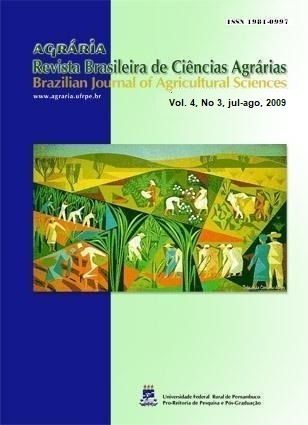Responses of <i>Parkinsonia aculeata</i> L. to the cutting and burning in an invaded area in the agreste paraibano
DOI:
https://doi.org/10.5039/agraria.v4i3a11Keywords:
biological invasion, mechanical control, cutting and burning, turkish, caatingaAbstract
Biological invasion cause many impacts on the ecosystem invaded, that is why human interference is often necessary in order to eradicate or control the alien species. Among the main practices for controlling invasive tree species are lumberjacking, followed by burning, as well as easier and less costly than other types of management. The objective of this study was to evaluate the effectiveness of management adopted for the control of Parkinsonia aculeata L. in an invaded area in the agreste on the Paraíba state, Brazil. The population of P. aculeata was deforested and burned. Three months after application of the control, all dead and living steams were sampled, and measured by means of the diameter at ground level (DGL). The shoots of the survived specimens had measures its diameter at the base (DBB) and height. From these parameters, the statistical analysis was performed and evaluated the responses of species to control. The management employee was inefficient because it eliminated only part of the individuals. It was also observed that the species has high capacity for re-growth of both regenerates and adults, which further difficult the control of the species as well as the choice of a right moment to improve the control.



